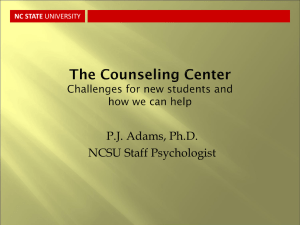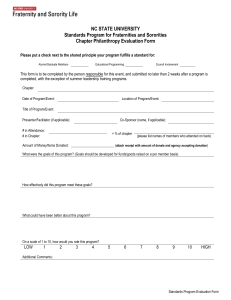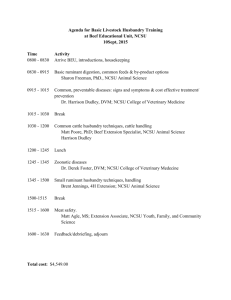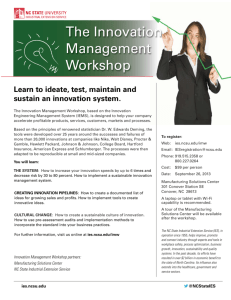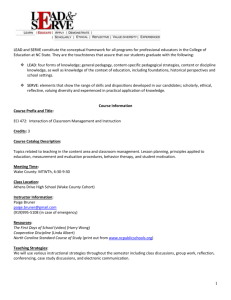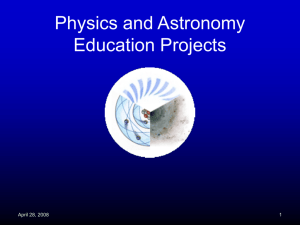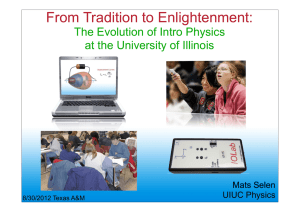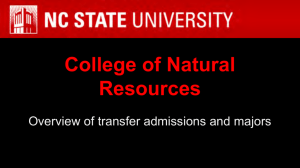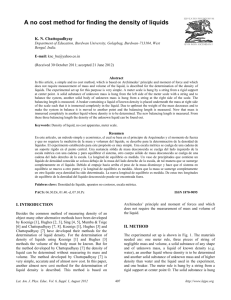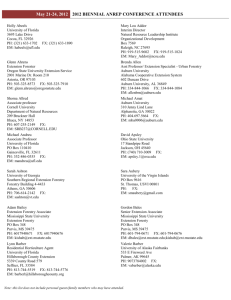Physics Education Research and the Transformation of Students
advertisement
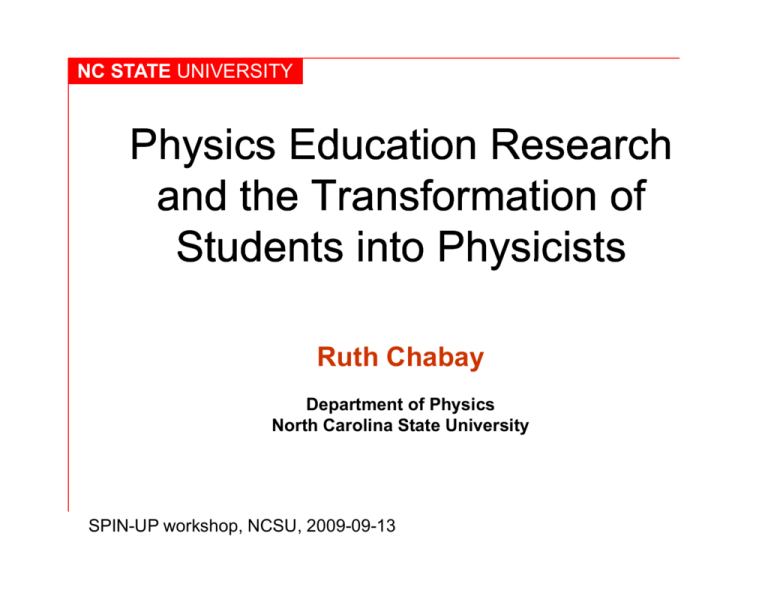
NC STATE UNIVERSITY Physics Education Research and d th the T Transformation f ti off Students into Physicists Ruth Chabay Department of Physics North Carolina State University SPIN-UP workshop, NCSU, 2009-09-13 The physics major transform initial state final state PER can offer: A framework for analyzing successful aspects p of yyour curriculum And for understanding why some instructional components are less successful What is PER? An interdisciplinary subfield of physics With a journal: Phys Rev ST: Phys Educ Res Ph.D. granting departments A topical group of AAPT with a yearly conference Research focused on the learning and teaching g of p physics y PER Involves: • Assessment • Pedagogy • Constructing environments that support learning • Curriculum components • Developing tasks that structure and scaffold reasoning… • Detailed research on student thinking • development of physics tasks, interview techniques, verbal analysis techniques… • Alternative, modern curricula • Restructuring g content and emphasis p to integrate g 20th century physics, modeling, computation PER can offer resources: Ready-to-use curriculum components • Active physics • UW tutorials Pedagogical environments • Cooperative group problem solving • SCALE-UP Assessment tools and strategies • FCI, FMCE, BEMA, CSEM, TUG-K, Direct… Reasons to Try PER PER-based based Approaches E Each h student t d t mustt construct t t knowledge k l d inside his or her own mind. A scaffolded, supportive environment can make the process more efficient, less painful, and more collegial. Environments and tasks that support pp active engagement benefit both wellprepared p p and p poorly yp prepared p students. Case Study: Cooperative Group Problem Solving (Minnesota) Goal: teach systematic problem solving strategies t t i Issue: students will use systematic strategies only l if problems bl are ttruly l challenging h ll i – nott solvable by rote Issue: if problems are challenging students need help, but one TA can’t individually tutor 20 students simultaneously Solution: formal cooperative group structure with defined roles ((drawn from psychology p y gy literature). Group Roles Manager g • Initiate planning, monitor progress, watch time, ask questions of TA if needed. Recorder • Only one pen: students must articulate ideas Skeptic • Checking, suggesting alternative approaches Adopting and adapting Group role videos for TAs and students, made at NCSU video 1 (YouTube) http://www.youtube.com/watch?v=vgF_lmPqbOA video 2 (YouTube) http://www.youtube.com/watch?v=xAJKxNUbjf8 Historyy of Cooperative p Group p Problem-Solving g at Minnesota: IImplementation l t ti in i algebra-based l b b d iintro t course Faculty observe success in algebra-based intro course demand implementation in calculus-based course, calculus based intro course Introduced into upper-level majors courses, by faculty demand Introduced into graduate courses, by faculty demand TA training now self self-sustaining; sustaining; PER group not involved Resources www.COMPADRE.org PER central • Curriculum resources • Reviews in PER Vol 1: Research-Based Reform of University Physics, E.F. Redish & P. Cooney, Eds. American Journal of Physics • Articles of general interest AAPT National Meetings • PER Conference at summer meeting Various PER group websites Phys Rev ST: Phys Educ Res • Technical research articles Current NCSU Projects How students read / process worked examples and incorrect solutions Students' St d t ' use off mental t l models d l in i reasoning i about b t correct / incorrect examples Stimulating sense-making sense making in computational activites Students use of macro/micro connections in explanations of processes When do expert TAs intervene, and how do they encourage sensemaking • NCSU PER group lab facilities
